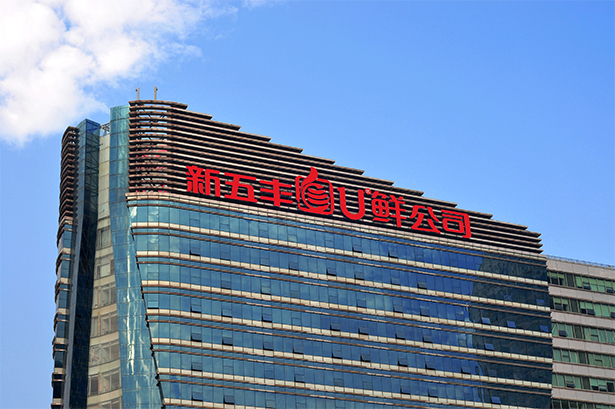[Tang Ren Shen Point] To smoothly traverse the pig cycle, the safety of the capital chain is crucial. Sun Shuangsheng, secretary of the Tang Ren Shen (TRS) board, China’s top pig producer, pointed out: In the early stage, the company has completed the refinancing of CNY 2.8 billion (USD 440 million), which significantly protects the safety of the capital chain. Moreover, the bank loans sought are medium- to long-term project loans with 5-10 years. If we seek short-term loans at this time, the financial pressure of concentrated loan repayment will be tremendous by then.

[Xinwufeng Point] Intelligent farming is another key to reducing costs. In 2021, for example, the company joined hands with Huawei, one of the largest telecommunications equipment makers in the world, to launch an intelligent pig farming project.
“Take pig survival rate and meat ratio indicators as an example. According to the pilot projects, the pig survival rate was 2% higher than the previous best year of traditional farming,” Xinwufeng said introducing the relevant person in charge, “and feed conversion ratio(FCR)decreased by 0.2, relying on the smart farming system. These are the key points of pig industry farming which can reduce the cost of pig farming.”
Cost reduction is essential for current farming companies to deal with rising costs.
“Our company faces the pressure of high feed ingredients prices and low pig prices and tries to reduce costs through various ways,” said an operation manager from a listed pig farming company. “For example, we are optimizing the feed formula and enhancing precision feeding technology to reduce the FCR and control the feed cost; expanding the farming scale to gradually dilute the management cost; continuously improving the level of epidemic prevention and management, and enhancing the survival rate and health of pigs by strengthening the execution of information technology.”

According to COFCO Futures researchers, large pig enterprises build teams focusing on futures and improve their market research and trading systems. Some large pig enterprises have successful hedging experience, avoiding operational risks during the downward spiral of hog prices.
Small and medium-sized enterprises are also participating in the “insurance + futures” project. These pig enterprises will continue to explore the road of combining “futures plus cash” and “production plus financing,” accumulate practical hedging experience in practice and enhance the comprehensive management ability to control market risks.
Zhang Minggui, executive chairman and president of New Hope Liuhe, a leading pig producer in China, stated: “2022 will be a challenging year for the pig industry. The market is still at a low level in general, and pig prices will be under greater pressure in the first half of the year, with a relatively low point from March to May, and after then, the price will start to adjust gradually.”

Sun Shuangsheng believes that the current pig cycle has touched the bottom.
“In 2019 and 2020, affected by African swine fever, the industry cut capacity very fast, resulting in a tight supply-demand relationship, and the hog price reached up to CNY 40 (USD 6.28) per kg,” he said. “Now many places have fallen to below CNY 12 (USD 1.89) per kg.”
He introduced the current losses of pig enterprises, and if the status quo continues for 1-2 months, a more thorough de-capacity is expected.



